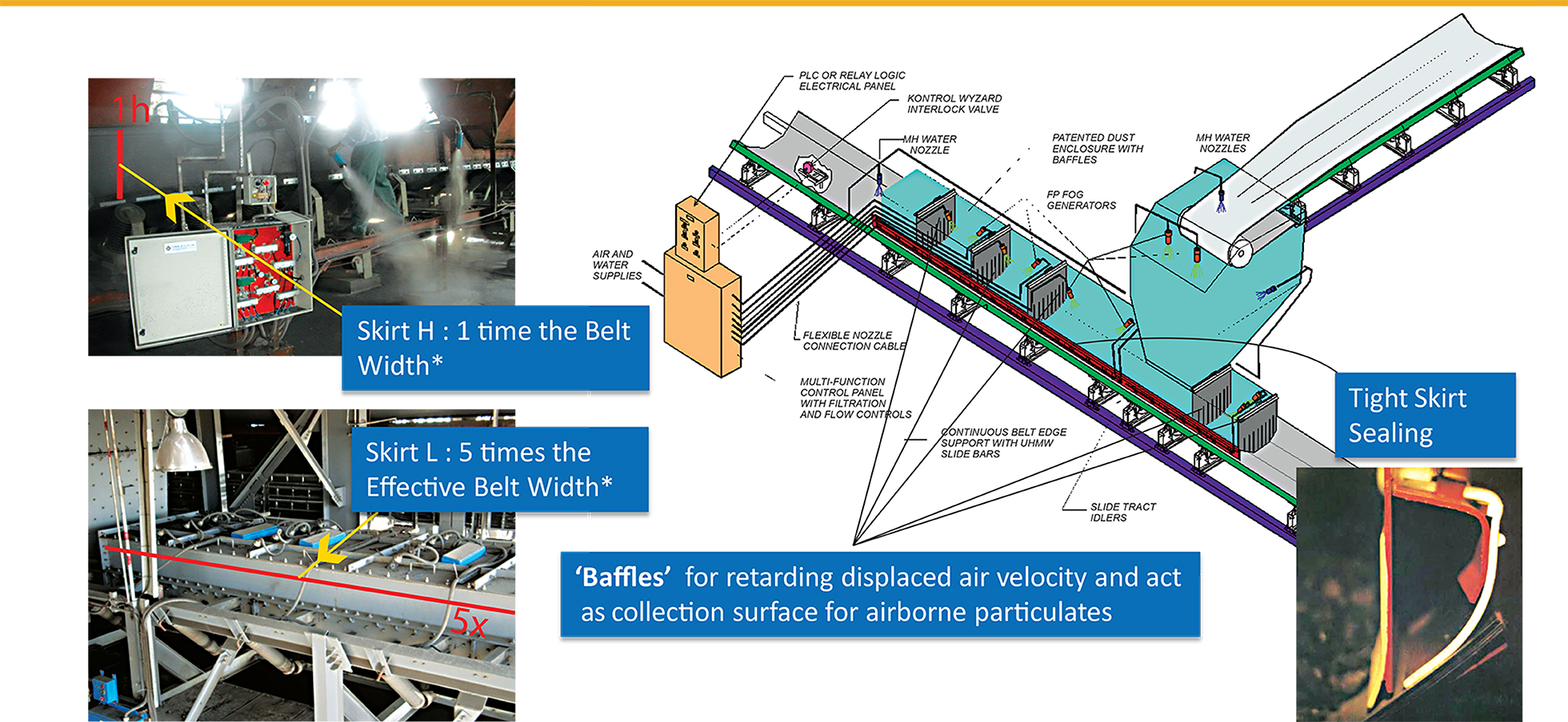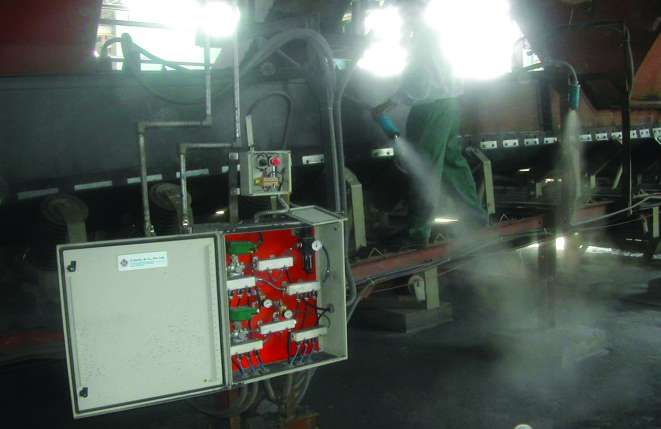#1. Contain the Fog and Dust
To control dust the first princple is to contain the dust and isoltae it from the ambient. Such a containment helps create an environment in which agglomeration of fog and dust can occour easily
#3. Provide Retention Time
The retention time for the fog and dust within the containment zones is required for good dust control. This however depends on the application and a number of factors i.e. TPH, material handled, material fineness, inherent moisture, height of fall etc. For some of the applications, baffles are also used in the containment to retard the displaced air, which assists the retention time to aid the fog and dust agglomeration.
#2. Apply Fog at every Dust Source
Require dquantum of nozzles are to be installed within the enclosures so that dense fog is projected to the areas of dust generation ( chutes ,impact zones ) and also ffills the entire containment zone. Fog is to be applied at each and every nuisance point, as it does not wet the material like the traditional dust suppression method, but only the dust generated at the nuisance point.
#4. Provide Collection Surface
Collection surface is any surface exposed to the fog / dust environment. The containment walls are the primary collection surface assisted by the pressence of baffles and even curtains as well other surfaces inside the enclosures to help collect the airborne particulates.


